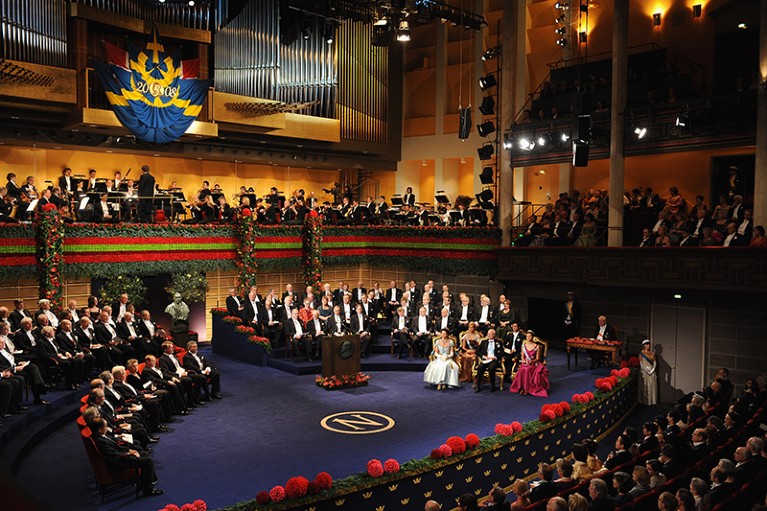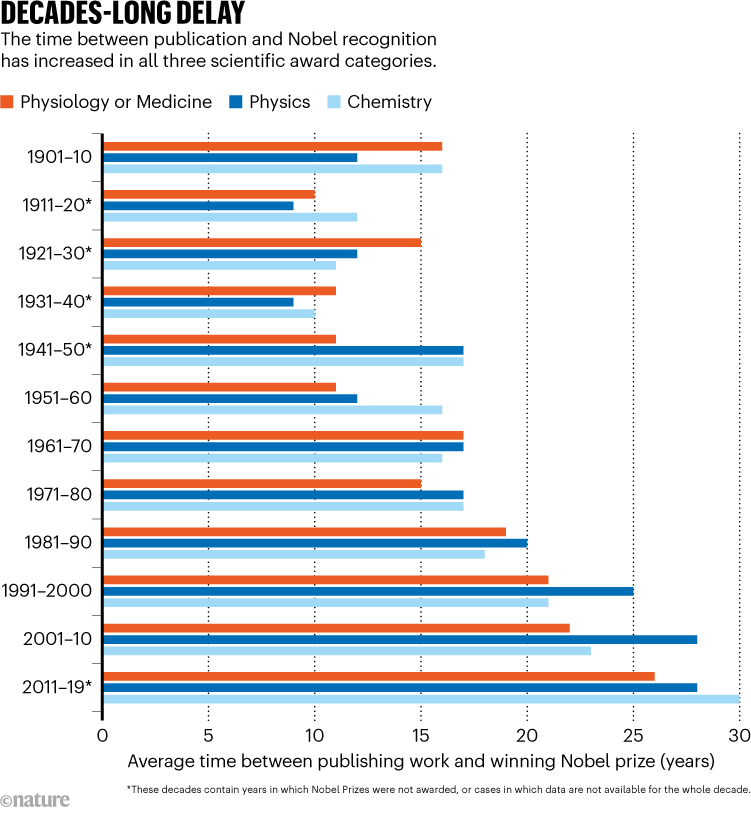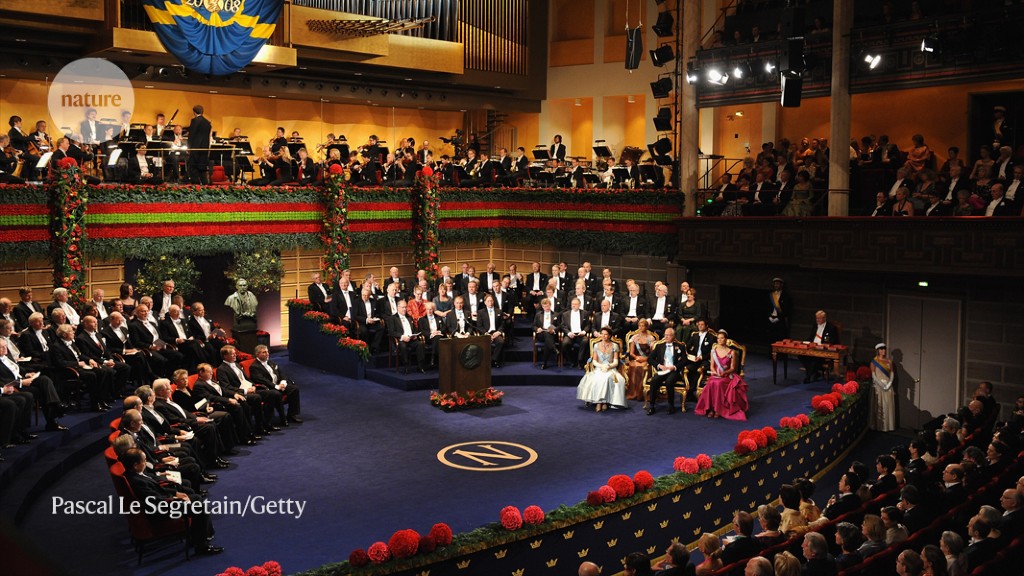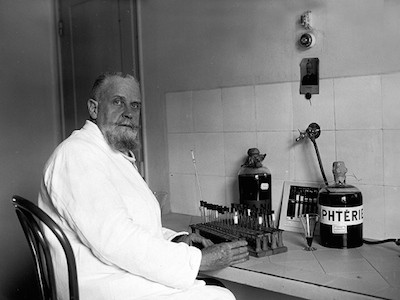[ad_1]

A ceremony to award the Nobel Prizes at Stockholm Live performance Corridor in 2008.Credit score: Pascal Le Segretain/Getty
The street to a Nobel Prize, probably the most prestigious scientific award on this planet, is rising ever longer, with nearly half of laureates now ready greater than 20 years from making a Nobel-worthy discovery to receiving the prize.
One evaluation exhibits that the common time between publishing the work and receiving one of many science prizes has almost doubled prior to now 60 years1. Throughout the three science prizes, chemistry now has the longest ‘Nobel lag’ — a median of 30 years over the previous decade — and physiology or drugs has the shortest, at 26 years (see ‘Many years-long delay’).

Supply: Ref. 1
Alfred Nobel’s will said that the prizes needs to be awarded “to those that, through the previous yr, shall have conferred the best profit to mankind.” In actuality this has solely occurred just a few occasions. However within the first half of the 20th century, it was widespread for Nobel prize recipients to be of their 30s — and that’s remarkable now, says Santo Fortunato, now a computational social scientist at Indiana College in Bloomington, who printed a 2014 evaluation on Nobel prizewinners because the award’s conception in 19012. His outcomes confirmed that the time between laureates’ prize-winning analysis and their Nobel had slowly elevated over time, with a steeper slope after the Nineteen Sixties than within the early years of the prize.
There are a selection of doable causes for this development, says Yian Yin, a computational social scientist at Cornell College in Ithaca, New York. It may very well be that the general variety of breakthroughs is growing every year, so awards can not sustain with the quantity of people that should be acknowledged, he says. It’s also the case that the significance of some works, which Yin describes as ‘sleeping beauties’, are solely realized years or many years later.
Shut however no Nobel: the scientists who by no means received
Alternatively, the lengthening hole may very well be an indication that there was a lower in ‘disruptive’ science — necessary research or discoveries that change the paradigm of their area. This may very well be inflicting the Nobel committees to focus extra on the previous.
The variety of ‘big-splash’ discoveries are diminishing, however once they do occur, they have a tendency to get acknowledged shortly, says Fortunato. For instance, biochemists Jennifer Doudna on the College of California, Berkeley and Emmanuelle Charpentier on the Max Planck Unit for the Science of Pathogens in Berlin, received the 2020 Nobel Prize in Chemistry simply eight years after their improvement of the CRISPR–Cas9 system as a genome-editing device. Some researchers speculate that the inventors of mRNA vaccines, which was rolled out to thousands and thousands of individuals worldwide through the COVID-19 pandemic, may obtain comparable recognition.
Fortunato factors out that, if the hole continues to develop, distinguished scientists may miss out on the award owing to the Nobel Committee’s rule banning posthumous prizes (excluding the 2011 Nobel Prize in Physiology or Drugs, a share of which was awarded to doctor Ralph Steinman, who had handed away three days earlier than the announcement, unbeknownst to the committee). “It has to cease in some unspecified time in the future,” he says, including {that a} rethink of the posthumous-awarding ban would permit extra folks’s work to get the popularity that it deserves.
[ad_2]



